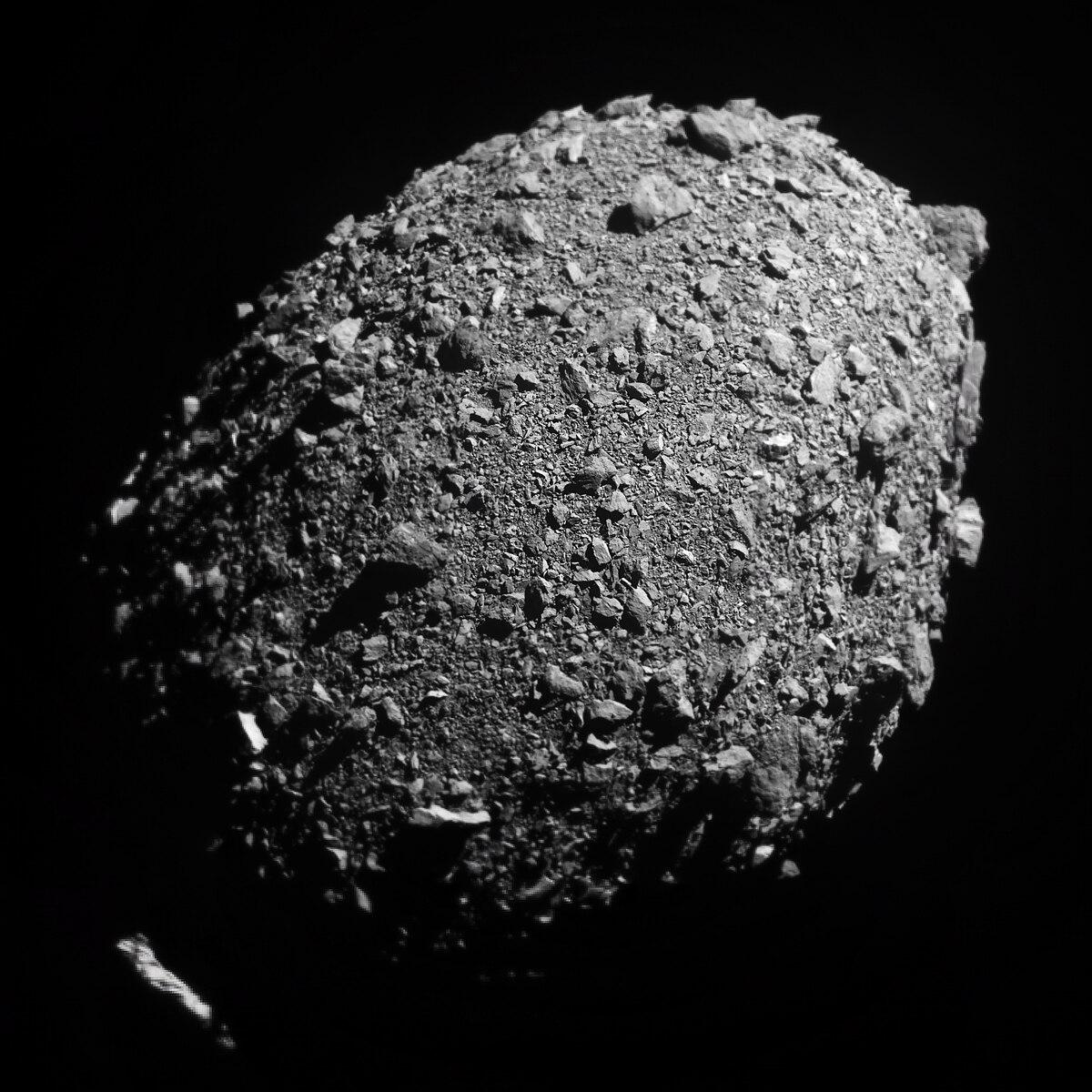
The Dimorphos asteroid
Last week, this column covered headlines about troubles being experienced by NASA with the International Space Station. This week, I want to describe a “recent” success: the DART (Double Asteroid Redirection Test) mission.
Over the past few decades, astronomers have identified at least 2,200 asteroids (wider than 460 feet) orbiting around the Sun and coming within 5 million miles of Earth’s orbit.
Recognizing the hazardous potential these large rocks present to earthlings and wanting to test the feasibility of redirecting one if it did threaten the Earth, in November 2021, NASA launched a rocket containing a mini-fridge-sized space probe, a reconnaissance camera unit, and one of Carl Sagan’s space kites for carrying the probe and camera hurtling towards Dimorphos, a 525-foot wide asteroid (“moonlet”) orbiting Didymos, a half-mile wide asteroid circumnavigating the Sun every 2.11 years.
Almost a year later, in September 2022, shortly after dropping off the camera to document the probe’s impact, the probe hit Dimorphos solidly while traveling at 4 miles a second (roughly 15,000 mph). As a result, 1% of the asteroid’s mass sprayed into space and quickly formed a long tail visible by telescopes on Earth and in space. Yes, you can see a movie of what the Hubble telescope captured at science.nasa.gov/missions/hubble/hubble-captures-movie-of-dart-asteroid-impact-debris).
More importantly, the test shortened Dimorphos’ orbit around Didymos by 32 minutes, more than five times as much as NASA claimed would validate the technique’s ability to alter an asteroid’s trajectory.
Thanks, NASA. For only $324 million, our world can now sleep a little more soundly.
Featured Articles

Storms Bring Heavy Rainfall and Local Disruptions →
December 22, 2025
Sierra County faces power outages and water issues amid heavy rainfall and storm warnings.
215 Animals Seized for Cruelty from Grass Valley Property →
December 22, 2025
Human Remains Found Near South Yuba Bridge in March Identified →
December 17, 2025
Transfer Station Burn Suspended After Community Concerns →
December 16, 2025
Sierra Hardware Plans Extensive Repairs After Flood Damage →
December 8, 2025
